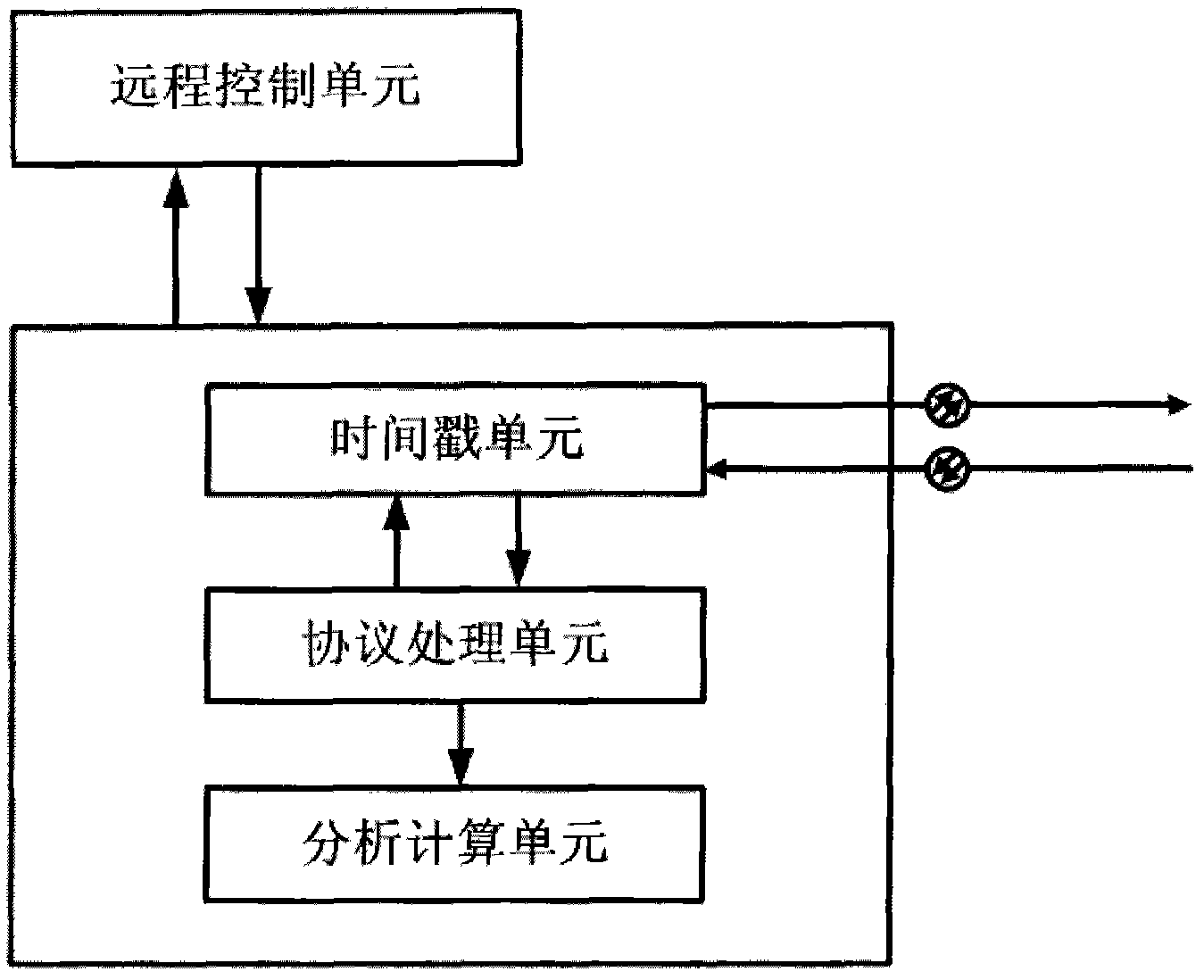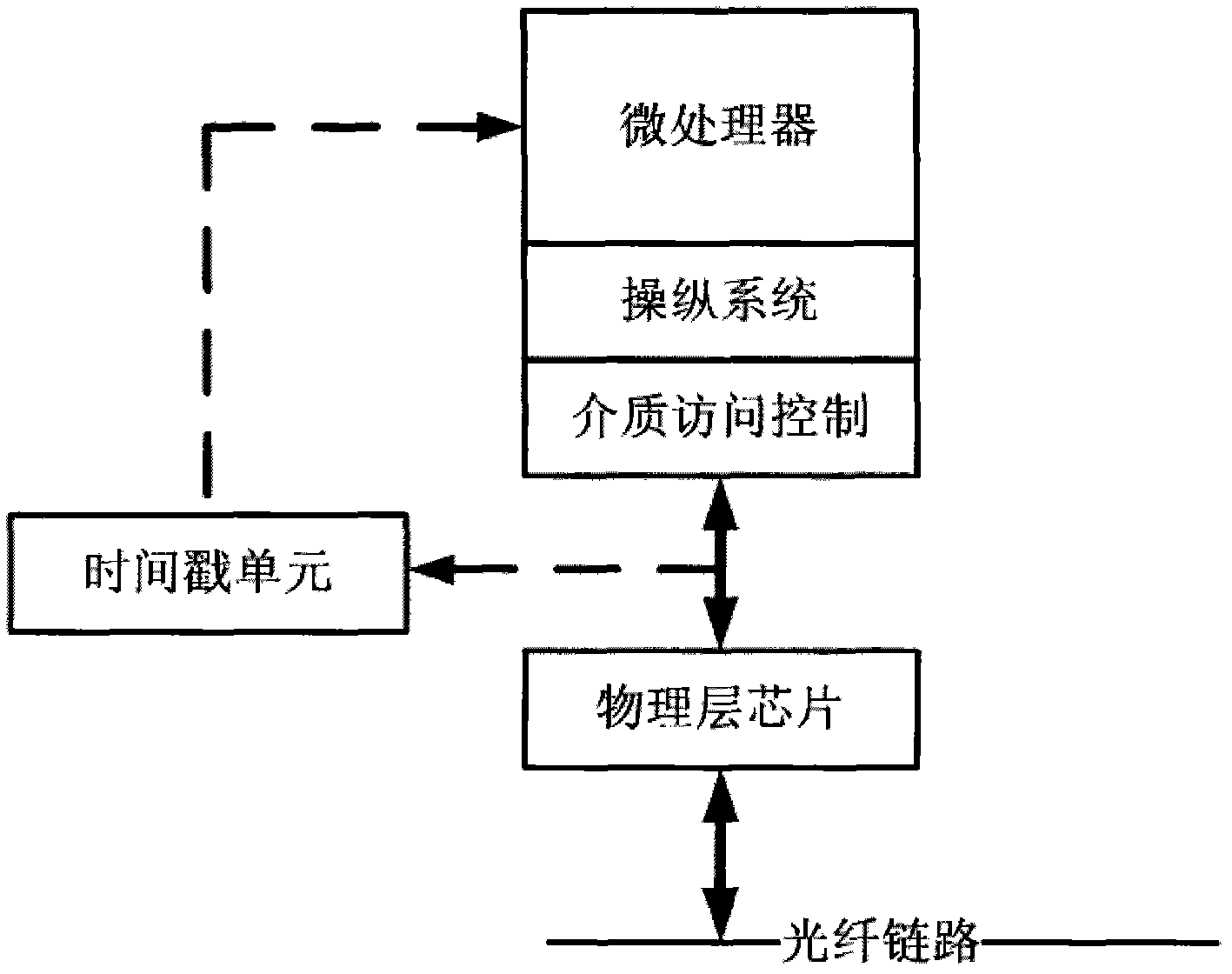Method and device for measuring optical fiber asymmetry time delay
A technology of symmetrical time delay and optical fiber measurement, applied in the field of optical communication, can solve the problems of inconvenient portability, low test efficiency, expensive instruments, etc., and achieve the effect of overcoming the limited number of instruments, short stable test time, and improved test efficiency
- Summary
- Abstract
- Description
- Claims
- Application Information
AI Technical Summary
Problems solved by technology
Method used
Image
Examples
Embodiment Construction
[0036] The present invention will be further described in detail below in conjunction with the accompanying drawings and embodiments.
[0037] see figure 1 As shown, the device for measuring fiber asymmetry delay provided by the embodiment of the present invention includes TSU (Timestamp Unit, time stamp unit), PPU (Protocol Processing Unit, protocol processing unit), ACU (Analysis and Calculation Unit, analysis and calculation unit) and RTU (Remote control unit, remote control unit), where:
[0038] The TSU is used to generate and record time stamp information t1 when the Master side sends a test message, and write the time stamp information t1 into the test message for transmission or transmit the time stamp information t1 to the PPU according to the test message mode; when the Slave side When receiving the test message, generate and record the time stamp information t2. The TSU needs to ensure sufficient precision and stability, and the precision and stability of the time...
PUM
 Login to View More
Login to View More Abstract
Description
Claims
Application Information
 Login to View More
Login to View More - R&D
- Intellectual Property
- Life Sciences
- Materials
- Tech Scout
- Unparalleled Data Quality
- Higher Quality Content
- 60% Fewer Hallucinations
Browse by: Latest US Patents, China's latest patents, Technical Efficacy Thesaurus, Application Domain, Technology Topic, Popular Technical Reports.
© 2025 PatSnap. All rights reserved.Legal|Privacy policy|Modern Slavery Act Transparency Statement|Sitemap|About US| Contact US: help@patsnap.com



